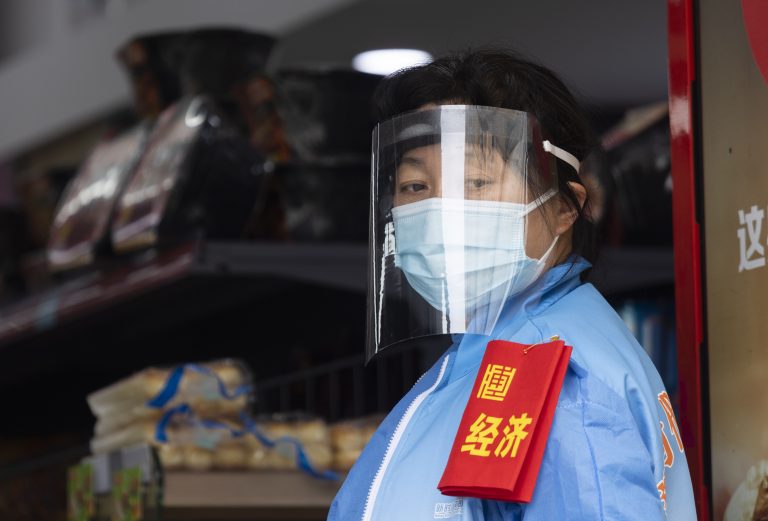Since late May, state and Chinese Communist Party propaganda outlets have been noticeably promoting Beijing’s economic policies and the central government urging local officials to do economic work well alongside “dynamic zero-COVID.”
The central government’s propaganda focus is a key indicator that the Chinese economy is in very poor condition and could already be in a recession. Other indicators like official data, analyst estimates, statistics from information service providers, and information circulating on Chinese social media also hint at serious economic trouble.
Beijing has introduced a number of policies to address the situation, but its prospects of turning the situation around are bleak.
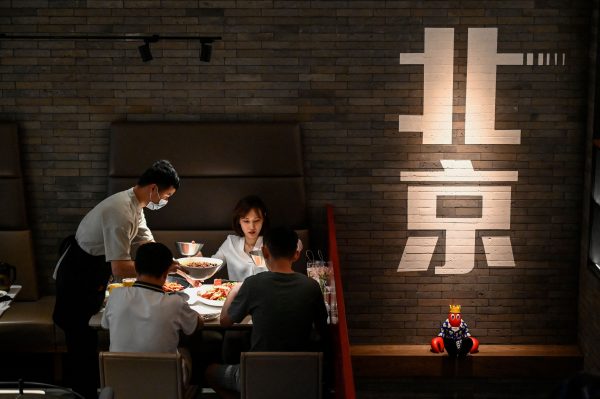
Notable propaganda
The May 26 edition of People’s Daily ran on its front page a piece about a State Council national teleconference on stabilizing the economy held the previous day. Premier Li Keqiang chaired the meeting and introduced 33 economic policy items covering six areas. Other mainland media outlets noted that the meeting was attended by 100,000 officials.
Per official media, Li urged “proactiveness” from both the central government and local governments at all levels in completing the tasks of economic and social development while doing a good job in epidemic prevention and control. He added that officials must avoid “one track mind” and “one-size-fits-all” approaches, and the State Council will send inspection teams on May 26 to 12 provinces to check on their policy implementation.
Success
You are now signed up for our newsletter
Success
Check your email to complete sign up
In a leaked transcript of the teleconference, Li warned that China’s economic growth is in danger of slipping out of a “reasonable range.” He encouraged officials to put in effort to “ensure positive economic growth for the second quarter,” and that the target “falls far short of the 5.5 percent growth target set out earlier this year.”
MORE ON POLITICS IN COMMUNIST CHINA
- Xi vs. Li? Analyzing Political Rumors About a ‘Split’ Between China’s President and Premier
- As Challenges Mount, China’s Xi Calls for ‘Self-Revolution’
- In Leaked Recording, Elite Chinese Scholar Laments Crippling Dysfunction of Communist Regime
On May 30, official media reported that the Shanghai Party Committee and government held a teleconference attended by over 1,100 local officials. Shanghai Party secretary Li Qiang urged local officials to stick to “dynamic zero-COVID,” fully restore normal production and living order, and “strive to win the double victory of epidemic prevention and control and economic and social development.”
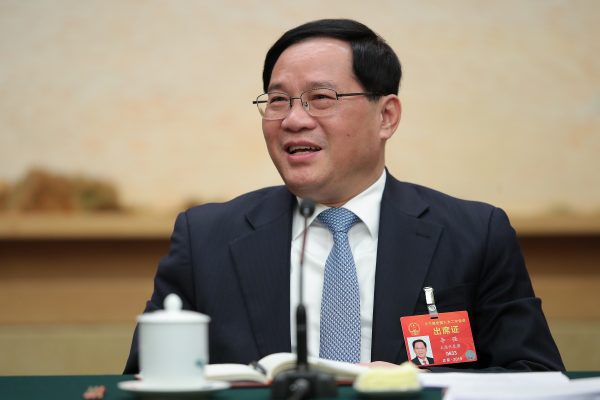
Li added that “zero-COVID” is shifting to the stage of “normalized prevention and control,” and officials must work to “prevent the epidemic, stabilize the economy, and secure development.” Businesses in Shanghai that can resume normal operations should be allowed to without being hampered by layer upon layer of restrictions.
Officials, he said, should also fully implement the package of economic policies issued by the central government and the city government, make every effort to accelerate economic recovery and revitalization, and “better stabilize market entities, strengthen (economic) driving forces, and benefit the people’s lives.” On June 1, Shanghai lifted access restrictions in most residential areas.
Troubling signs
In considering a number of key indicators, it becomes clear that CCP is emphasizing economic recovery in an effort to avoid catastrophe.
Figures released by the National Bureau of Statistics in April were grim. Retail sales and industrial production dropped 11.1 percent and 2.9 percent respectively from a year ago, or lower than the 6.1 percent decrease and 0.4 percent increase as expected by analysts. Sales of automobiles declined 31.6 percent and catering income fell 22.7 percent in April as compared to last year.
Meanwhile, the unemployment rate in China’s 31 largest cities hit a high of 6.7 percent in April, while total social financing (a broad measure of credit and liquidity) in the month fell by about half from a year ago to 910.2 billion yuan.

READ MORE
- In 2022, Expect China’s Economy to Worsen Further
- Communist Politics Are Bringing Disaster to China–And Xi Jinping
Early official economic data for May is not promising. China’s official manufacturing purchasing managers’ index climbed to 49.6 in May from 47.4 in April. But the PMI remained below the 50-point mark separating contraction from growth for three consecutive months.
Nomura noted in a recent report that the “zero-COVID” lockdowns led to a sharp contraction in government revenue, including land sales revenue. The PRC government is estimated to have a funding gap of about 6 trillion yuan, or about 2.5 trillion yuan less revenue due to tax refunds and weaker economic production, and 3.5 trillion yuan of lost land sales revenue.
On June 1, mainland real estate information provider CRIC released sales data showing that the top 100 Chinese property companies saw their monthly sales volume decrease by nearly 60 percent in May. Cumulative sales of the top 100 real estate companies dropped by 52.3 percent in the first five months of 2022.
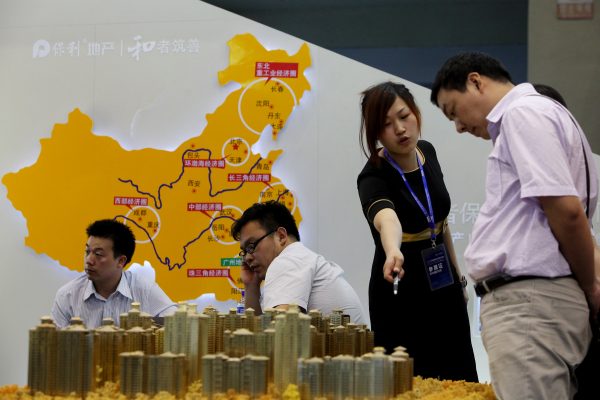
Meanwhile, comparisons of data from mainland company information provider Tianyancha circulating on Chinese social media showed significant drops in the number of social security beneficiaries at large tech firms like Alibaba, Tencent, and Didi, as well as private education and training companies like New Oriental and Xueersi, between June 1, 2021 and June 1, 2022.
The tens of thousands of fewer social security beneficiaries at prominent companies hint at mass layoffs, a smaller pool of potential home buyers, and shrinking consumption power of Chinese residents.
- 3 Key Takeaways From China’s ‘Two Sessions’ Meetings This Year
- 7 Ways China Is Destroying Its Own Economy
- China Shows Signs of Fiscal and Food Shortages Amid Slowing Economic Growth
Some Chinese netizens also shared on social media how it was noted in a recent central bank-led banking and financial sector risk control conference that there are almost 40 million homes with mortgage issues and over 10 million foreclosed homes across the country.
Assuming the information is accurate, then the situation with unemployment and pay cuts in China is quite severe. Further, the banking industry faces serious systemic financial risk if the average outstanding bank loan on each of the 50 million homes is sizable.
Saddled with ‘zero-COVID’
Several factors account for the Chinese economy’s sharp deterioration, including the Omicron outbreak in mid-March, geopolitical pressures stemming from the PRC’s relationship with Russia, and fears of increased political risk in China after tech sector crackdowns in 2021. Of all the factors, Beijing’s “zero-COVID” policy appears to have played the greatest role in retarding and thus damaging the Chinese economy.
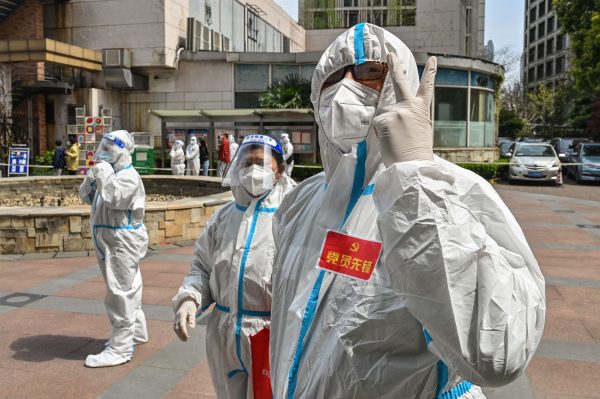
Beijing, however, cannot abandon “zero-COVID” because it has become a key part of Xi Jinping’s political legacy. Discarding the policy at this juncture would be tantamount to an admission of its failure and would deal a crushing blow to Xi’s “quan wei” (authority and prestige). Xi needs to preserve and even boost his “quan wei” at all costs if he is to break Party norms and extend his tenure at the 20th Party Congress at the end of the year.
The Xi leadership has thus far relied on propaganda to “spin tragedy into victory” and credit Xi Jinping and “zero-COVID” for securing a “major phased achievement” in Shanghai and other outbreak areas. Yet propaganda can only help Xi so much as the realities of sharp economic deterioration impact the lives of Chinese citizens. Propaganda will also not do much for Beijing in overcoming the deficiencies of Party bureaucratic culture and convincing officials to properly implement economic rescue policies while simultaneously maintaining “zero-COVID.”
The CCP’s internal contradictions leave the Xi leadership with a steep uphill battle to rescue the economy. Social instability will rise as the Chinese economy worsens further this year, as well as political risks for Xi and the CCP.
Larry Ong is a senior analyst with New York-based political risk consultancy SinoInsider. He was part of the SinoInsider team that forecasted the 19th Party Congress and 2018 Two Sessions personnel reshuffles with a high degree of accuracy.



